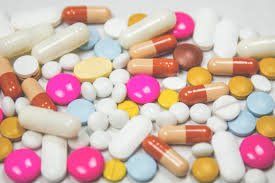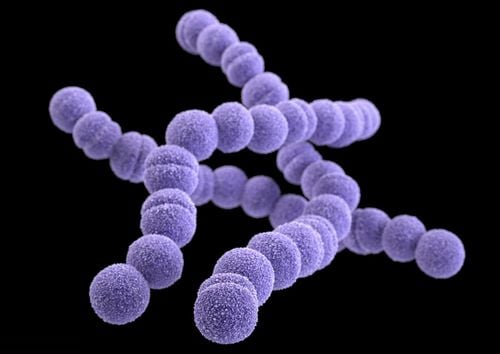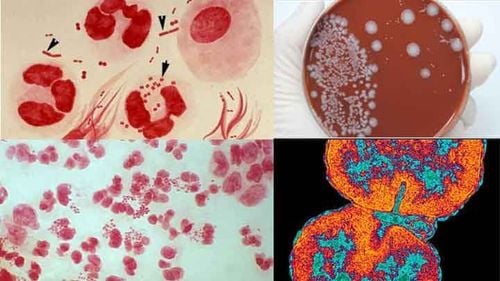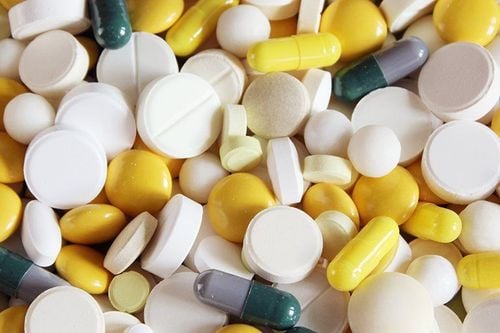This is an automatically translated article.
Bacteria are single-celled, microscopic organisms that thrive in a variety of environments. These organisms are very important to the environment and human health.1. What are bacteria?
Bacteria or germ , is a very small single-celled prokaryotes; Some are parasitic. Bacteria are a group of single-celled organisms, neither plant nor animal, that are microscopic in size and usually have a simple cell structure without a nucleus, cytoskeleton, and organelles such as mitochondria and chloroplasts. lap.
Bacteria are the most abundant group in the living world. They are present everywhere in soil, water, radioactive waste, inside other organisms. Bacteria are thought to be the first living things to appear on earth, about 4 billion years ago. The oldest known fossils are of bacteria-like organisms. One gram of soil typically contains about 40 million bacterial cells. One milliliter of fresh water usually contains about one million bacterial cells. The earth is estimated to contain at least 5 billion bacteria, and most of the earth's biomass is thought to be made up of bacteria.
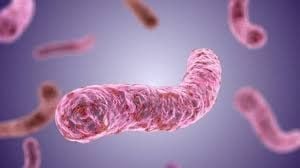
Trắc nghiệm: Bài kiểm tra chỉ số trí tuệ cảm xúc (EQ) của bạn
Chỉ số trí tuệ cảm xúc Emotional Quotient (EQ) là một chỉ số dùng để nói lên trí tưởng tượng, đánh giá và cảm xúc của một con người. Hãy làm bài trắc nghiệm sau để biết chỉ số EQ của bạn là bao nhiêu?
Nguồn tham khảo: webmd.com
2. What types of bacteria are there?
There are different types of bacteria. One way of classifying them is by shape: Spherical, rod-shaped, spiral, comma-shaped, filamentous....
Cocci are bacteria that are spherical, but can also be spherical. oval or candle, cocci known as cocci, have an average diameter of about 1 μm. Cocci are divided into: Diplococci are cocci that stand in pairs such as pneumococcus (Streptococcus pneumoniae) and gonorrhea (Neisseria gonorrhoeae). Streptococci are bacteria that stand in chains. Staphylococci are cocci that stand in clusters like bunches of grapes like staphylococcus aureus. Bacilli: The common name for all rod-shaped bacteria, their size is usually from 0.5-1.0-4 μm. Spiral : Is the name for bacteria with two or more helices, the size of which varies from 0.5-3-5-40 μm. Most spirochetes are saprophytic, a few are very pathogenic.
3. Bacterial morphology and structure
Bacterial cells are different from plant and animal cells. Bacteria are prokaryotes, which means they do not have a nucleus.
A bacterial cell consists of:
Cell wall: The outermost layer that surrounds bacteria, keeping them in shape. The cell wall has important physiological functions such as maintaining the morphology, osmotic pressure inside the cell, protecting the cell against physical and chemical agents, carrying out the charge at the cell surface. Based on the chemical properties and the ability to capture dyes, it is divided into Gram - and Gram bacteria + Mucous shell: Some bacteria have an outer layer of cell wall called the mucous coat, this is the protective layer. bacteria avoid phagocytosis by leukocytes, in addition, this is also a place to store nutrients. The chemical composition of the mucus coat determines the antigenicity of the bacteria. Cytoplasmic membrane: The membrane that lies under the cell wall, also known as the plasma membrane, has a thickness of 4-5 nm, accounting for 10-15% of the weight of the bacterial cell. The cytoplasmic membrane has many important functions: maintaining osmotic pressure, ensuring active accumulation of nutrients, and expulsion of metabolic products. Cytoplasm: The main component of the bacterial cell, containing genetic material and ribosomes Ribosomes: The site of synthesis of cellular proteins, mainly RNA and proteins Nucleonuclear: Bacteria do not have a nuclear membrane, the bacterial nucleus only consists of a ring-shaped chromosome made up of a single DNA molecule, containing the essential genetic information of bacteria. Capillaries, villi: Capillaries are mobile organs of bacteria, not all bacteria have flagella. Villi are hairs that grow all over the surface of some bacteria, making it easier for them to stick to the substrate, increasing the area of contact with food.

4. Bacterial nutrition
Bacteria "eat" in different ways:
Heterotrophic bacteria, which obtain energy through the consumption of organic carbon, most of which they absorb from dead organic matter, such as decomposing meat. Autotrophic bacteria produce their own food, either through: Photosynthesis, using sunlight, water and CO2, or chemical synthesis, using CO2, water and chemicals such as ammonia, nitrogen, bacteria that use photosynthesis are called phototrophs Some types, such as cyanobacteria, produce oxygen They can play an important role in the production of oxygen in the atmosphere chemoautotrophs: bacteria that derive energy from chemical synthesis.
5. Bacterial reproduction
The main form of reproduction in bacteria is cell duplication, from a parent cell that divides to form 2 daughter cells. Each species of bacteria has a different growth rate, producing one generation every 10-30 minutes on average. In addition, bacteria also have a form of sexual reproduction through the form of conjugation between two cells.
MORE:
What are flesh-eating bacteria? What diseases do pneumococci cause? Persistent cough caused by mycoplasma bacteria




